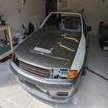Summary: Front Mount Intercooler Options & Piping Layouts
Announcements
-
Similar Content
-
Latest Posts
-
Hey everyone, just wanted to let you know about an app I use to track the modifications, repairs, servicing etc I do to my R33 GTR. You might like to use it as well. I'm biased because my son just wrote and released it! But I think you might find it useful to... https://trackmymods.com
-
Hey everyone, been on here for a while, but never introduced myself before. 1st import was a R32 GTS Type M, then R33 GTS, now R33 GTR - each one sold to help pay for the next one. Over the years my son has seen me modify and do changes to my imports and was one of the reasons for him to build an app for car enthusiasts like us. (He can only afford a 2007 Honda at the moment, but he'll get there!) Anyway, bit of a proud Dad moment as he's released an app that I use and you all might like to as well. https://trackmymods.com
-
By Dose Pipe Sutututu · Posted
It will sound tragic and you wished you didn't have 1x exhaust per turbo. There's a reason why most S55 owners change to a single mid pipe. -
Echo the comments about the well preserved condition it's in. It has the aero bumper too for extra points. Nice car, and please keep it like that! 🙂
-
1. There are no real performance benefits. It sounds different, and as the pipes are not as large diameter you can claw back some undercar clearance or run lower (if that's your thing). 2. Twin pipes, offering exactly the same cross sectional area as a single pipe** will have higher pressure drop - so will not flow as well. That's because there is more surface area of wall per cross sectional pipe area, hence more frictional losses. ** But of course, it is almost impossible to get 2 pipes that are exactly the same XS area as a given typical single pipe. eg, 2x2" is not the same as 1x 3", although it is close. If the 2x pipes add up to less XS area than the single - it will just be flat out worse. If the 2x pipes add up to a bit more than the single, then it might come out as a wash. If the 2x pipes are substantially more XS area than the single, then it will probably flow a little better. 3. No. Why would there be? What have cats got to do with boost creep?*** ***But for f**ks' sake, please run a cat. 4. If you want.
-






Recommended Posts
Create an account or sign in to comment
You need to be a member in order to leave a comment
Create an account
Sign up for a new account in our community. It's easy!
Register a new accountSign in
Already have an account? Sign in here.
Sign In Now